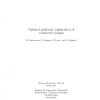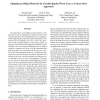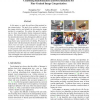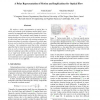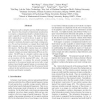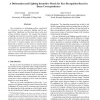CVPR
2011
IEEE
13 years 7 months ago
2011
IEEE
CVPR
2011
IEEE
13 years 7 months ago
2011
IEEE
The performance of an offline-trained classifier can be improved on-site by adapting the classifier towards newly acquired data. However, the adaptation rate is a tuning parame...
CVPR
2011
IEEE
13 years 7 months ago
2011
IEEE
In this paper, we study the problem of fine-grained image categorization. The goal of our method is to explore fine image statistics and identify the discriminative image patche...
CVPR
2011
IEEE
13 years 7 months ago
2011
IEEE
Many computer vision tasks can be formulated as labeling problems. The desired solution is often a spatially smooth labeling where label transitions are aligned with color edges o...
CVPR
2011
IEEE
13 years 7 months ago
2011
IEEE
Multi-view stereo methods reconstruct 3D geometry from images well for sufficiently textured scenes, but often fail to recover high-frequency surface detail, particularly for smo...
CVPR
2011
IEEE
13 years 7 months ago
2011
IEEE
Recently the sparse representation (or coding) based classification (SRC) has been successfully used in face recognition. In SRC, the testing image is represented as a sparse lin...
CVPR
2011
IEEE
13 years 7 months ago
2011
IEEE
Image-based location estimation methods typically recognize every photo independently, and their resulting reliance on strong visual feature matches makes them most suited for dis...
CVPR
2011
IEEE
13 years 7 months ago
2011
IEEE
We explore a polar representation of optical flow in which each element of the brightness motion field is represented by its magnitude and orientation instead of its Cartesian p...
CVPR
2011
IEEE
13 years 7 months ago
2011
IEEE
Human saccade is a dynamic process of information pursuit. Based on the principle of information maximization, we propose a computational model to simulate human saccadic scanpath...
CVPR
2011
IEEE
13 years 7 months ago
2011
IEEE
Face recognition is a challenging problem, complicated by variations in pose, expression, lighting, and the passage of time. Significant work has been done to solve each of these...
